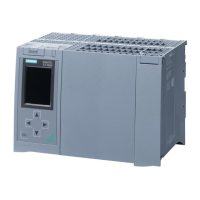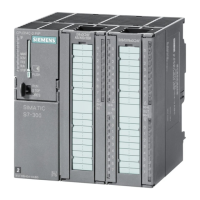Configuring
7.2 Process images and process image partitions
S7-1500 Automation System
System Manual, 01/2013, A5E03461182-01
89
7.2 Process images and process image partitions
7.2.1 Process image - overview
Process image of the inputs and outputs
When the user program addresses the input (I) and output (O) operand areas, it does not
query the signal states directly from the I/O modules. Instead, it accesses a memory area of
the CPU. This memory area contains an image of the signal states and is called the process
image.
Advantages of the process image
A process image offers the advantage that you can access a consistent image of process
signals during cyclic program execution. If a signal state at an input module changes during
program processing, the signal state is retained in the process image. The process image is
not updated until the next cycle.
You can only assign the addresses of a module to a single process image partition.
32 process image partitions
In the S7-1500 automation system, the overall process image is subdivided into up to
32 process image partitions (PIP).
PIP 0 (automatic update) is automatically updated in each program cycle and is assigned to
OB 1.
Process image partitions PIP 1 through PIP 31 can be assigned to the other OBs. This
assignment occurs in the TIA Portal when configuring the I/O modules.

